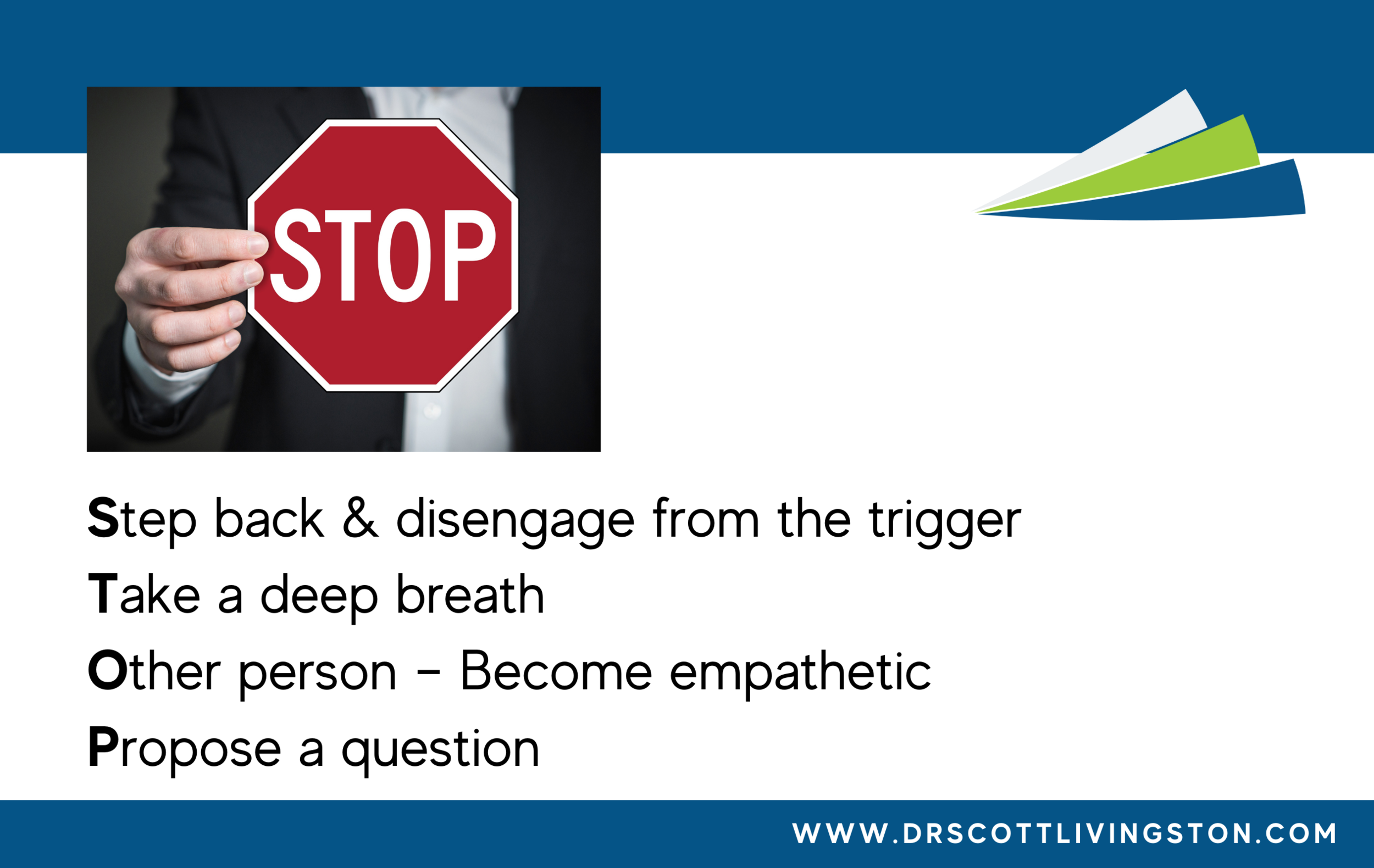I had an interesting conversation with a coaching colleague the other day. He called me to get some perspective on a difficult client that he was coaching.
Case in Point
His client is a top performer in her field and has aspirations to get promoted in her company. She is a very hard charger and a self-proclaimed perfectionist. Overall, she is respected by the team she leads, but that dynamic is starting to show some cracks.
In meetings, she is always telling her team to push back on her, and that she is open to feedback. However, the team has recently started shying away from doing this, because when they do, her non-verbal communication says she is not in the mood for it. Her words say “I am open”, but her facial expressions say “Don’t you dare”.
Her team says she is a workaholic, routinely sending emails around 2 AM. If someone asks her to be in a mentoring relationship, she always says yes. If her bosses ask her to do something, she will call the team together at any time of the day to kick off a project and make assignments.
My colleague spent a day shadowing her. He went to meetings with her and observed her in her office where her phone rang and text alerts went off constantly. She answered the phone by the second ring and usually picked up the phone to answer her texts within 30 seconds.
One of her teammates even pulled my colleague aside and said they were really concerned about her, that she rarely takes time to eat and when she does it is only half of a cup of yogurt. They said something to the effect of: “We don’t know when she sleeps. Stuff comes to us at all hours of the night. People on the team have started sleeping with their phone alerts on so that they don't miss anything. This can’t be healthy long term…can it?”
When I asked my colleague if he had addressed any of this with her yet, he said “yes, to all of it.
Her response to him was that:
She loved work, so why wouldn’t she do a lot of it?
She has always strived for perfection, and that's what got her where she is today.
Her bosses love her production.
She feels fine. She eats when she is hungry and she doesn’t require much sleep.
She Is Not Fine.
The lie that this leader is telling herself is that she is fine. She is not fine.
While things may seem okay to her right now, she is on a path to self-destruction. I have seen this pattern too many times in my leadership coaching. The person who is striving so hard that they never say no, and they have no boundaries.
According to Dr. John Townsend, in his book Hiding From Love, one of the most basic human needs we all have is that of “Integration; Our need for resolving good and bad”. This person just always says yes so that others feel good about them. This is the person who gets a 95% on a test and feels like a failure, so they start believing that the only way to live successfully in the world is to always get 100%.
Dr. Townsend says that this temporary solution to the tension between real and ideal is always inadequate and involves some sort of splitting between good and bad, keeping the two apart rather than resolving them through forgiveness, both of themselves and others.
The problem continues for folks like this leader because while it is a psychological concern, it will eventually manifest itself physically as well.
Dr. Gabor Mate, MD, writes in his book When The Body Says No, that our immune system does not exist in isolation from daily experience. Many people unwittingly spend their lives under the gaze of a powerful and judgmental examiner whom they must please at all costs.
Gabor goes on to write that stress is a complicated cascade of physical and biochemical responses to powerful emotional stimuli. When emotions are repressed and dissociated from our awareness and relegated to the unconscious, this confuses our physiological defenses and our immune system goes on the attack rather than being in protection mode.
What I found most interesting in studying Dr.Mate is that almost none of his patients with serious diseases had ever learned to say NO.
Back to our example: no, she is not fine. She is living in a self-delusion.
George Vaillant said, “It is not stress that kills us. It is effective adaptations to stress that allows us to live.”
Stress tolerance is the ability to withstand adverse events without developing physical or emotional symptoms by actively and positively coping with stress. One way to positively cope with stress is to learn to resolve the good and the bad. It is what Brene Brown has written extensively on, to begin to look at imperfection as a gift.
Learning Stress Tolerance
The growth of this emotional intelligence domain takes some very specific work.
The first is developing an understanding of the need leaders have to understand the tension that exists between the ideal and the real, and to resolve the need to understand between good and bad. There is at the beginning of this kind of development the setting of healthy boundaries. There is no need to try to put other coping strategies into place if a leader is going to keep unhealthy boundaries. They just need to know that at some point in the future the data suggests that the body does keep score. There will be a payment due on this kind of life choice.
Once some healthy boundaries are put into place, things like progressive relaxation, purposeful distraction, self-debate, deep breathing, exercise, and spiritual worship can be employed.
Leaders who are experiencing feedback like my colleagues' clients need to heed the warnings.
The Feedback Is Telling Them Something
You can grow your tolerance to stress in a healthy way. A way that you can become an even better performer and leader. A way that might not have to be as costly to your psyche and your overall health.












